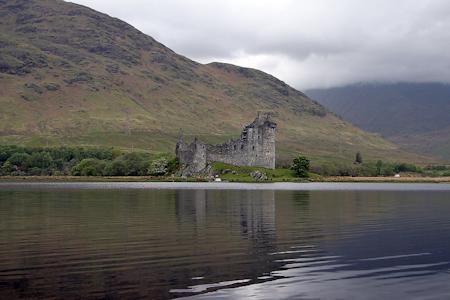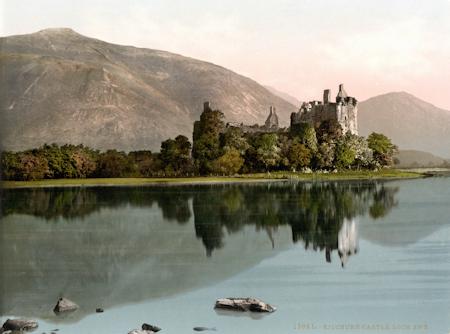
Kilchurn Castle
Kilchurn Castle was a 15th Century stronghold of the powerful Clan Campbell. It sits at the head of Loch Awe and controlled access from the Pass of Brander to the Lands of Lorne.
Kilchurn Castle was built by Margaret the wife of Sir Colin Campbell, 1st Lord of Glenorchy. He was a crusader knight who fought in Rhodes against the Turkish.
15th Century Construction
When he left Colin broke a ring in two, giving one half to Margaret and keeping the other as a token. He told her that only when she received the other half of the ring back should she believe that he is dead.
Margaret didn't have an easy time during the construction. She was surrounded by suitors trying to convince her of Colin's death. Baron Neil MacCorquodale eventually tricked her into believing he was dead and that his token had been stolen by Turks. She agreed to marry Neil when the central tower at Kilchurn was completed. She also instructed the builders to slow down the pace of construction.
It was on the day of the marriage celebrations that Colin returned, bearing his token, and the marriage was called off.
Kilchurn Castle sat on a small island at the top of Loch Awe. It was a five storey tower house with a courtyard surrounded by curtain walls. The house was linked to the main land by a secret causeway hidden below the water.
By 1500 an additional range and the lower hall had been added inside the south wall. Late in the 1500s the castle was extended by the 6th Lord with the addition of four corner turrets.
Despite his renovations Colin Campbell, 6th Lord of Glenorchy moved his family to the more comfortable Balloch Castle (later rebuilt as Taymouth Castle) in Perthshire. The castle was left in the custody of Clan MacGregor.
A feud between the two clans saw the MacGregors removed from Kilchurn at the start of the 17th Century.
War and Barracks
In 1681 Sir John Campbell, recognising the strategic importance of his family's former home, devised a plan to sell the castle to the government. He added a three storey L-shaped block inside the north wall, thereby converting it to a military barracks capable of holding 200 troops. The government chose to upgrade its base at Fort William instead.
The government did make use of the castle though. It was garrisoned during the Jacobite uprisings in 1715 and 1745.
In 1769 a storm badly damaged the castle and it was abandoned. It lost its roof shortly thereafter and local builders raided it for stone for their own projects. A drainage project on Loch Awe in 1817 lowered the water level and merged the castle's island to the mainland.
The castle passed into state care and is looked after today by Historic Scotland. They open the castle during the summer months from April to September. Access to the castle is either by boat from the loch or over land from the A85. There are no facilities at Kilchurn.
Status: Monument
Owner: Historic Scotland
Website: www.historic-scotland.gov.uk


Kilchurn Castle viewed from a boat

Lithograph of Kilchurn Castle circa 1900